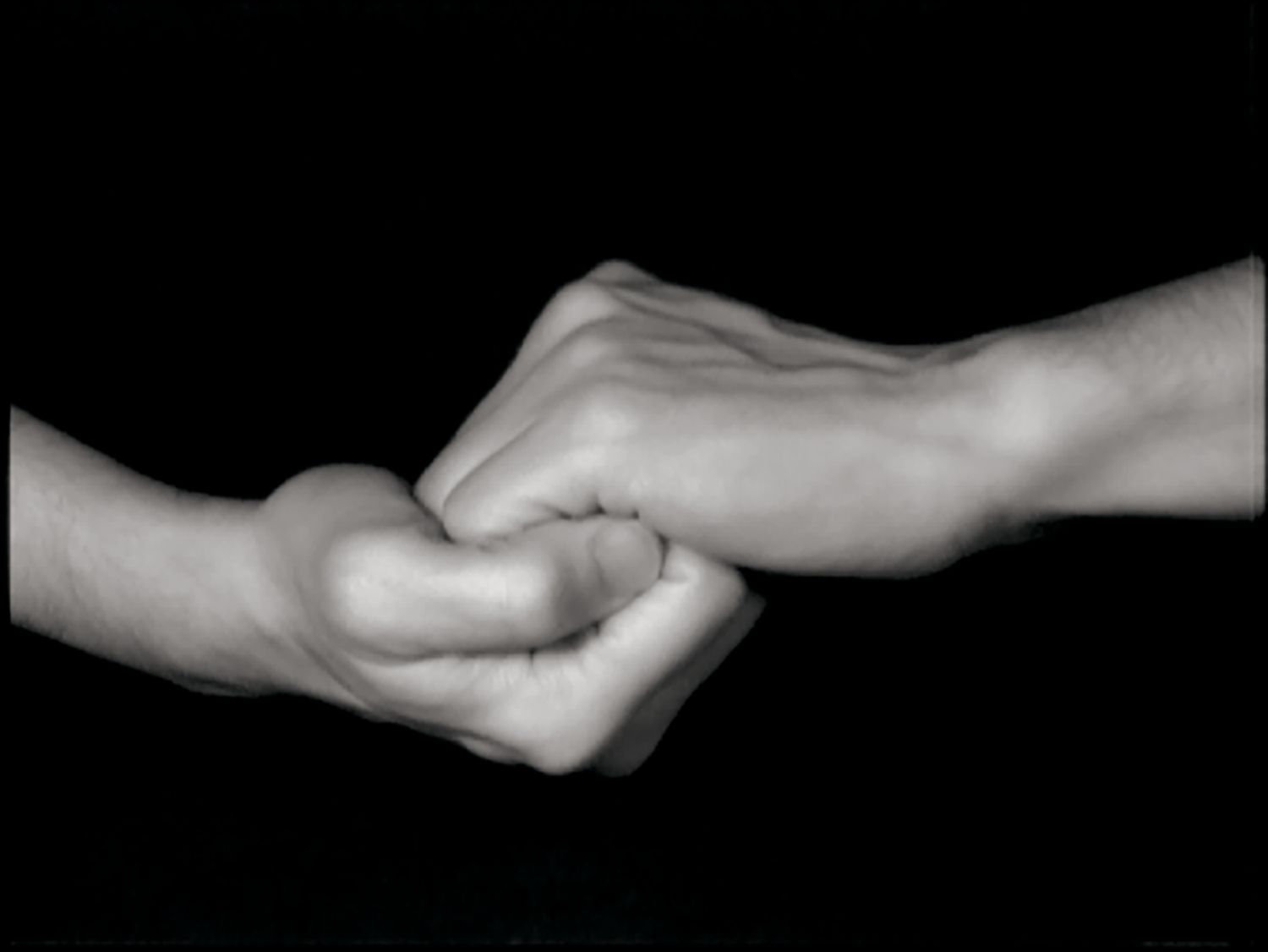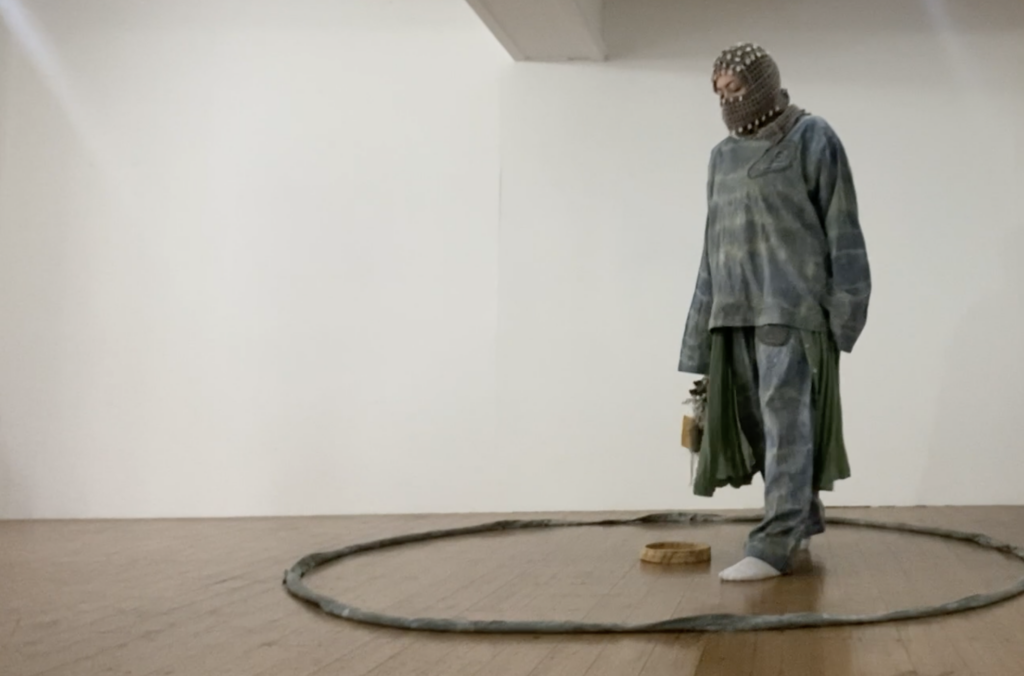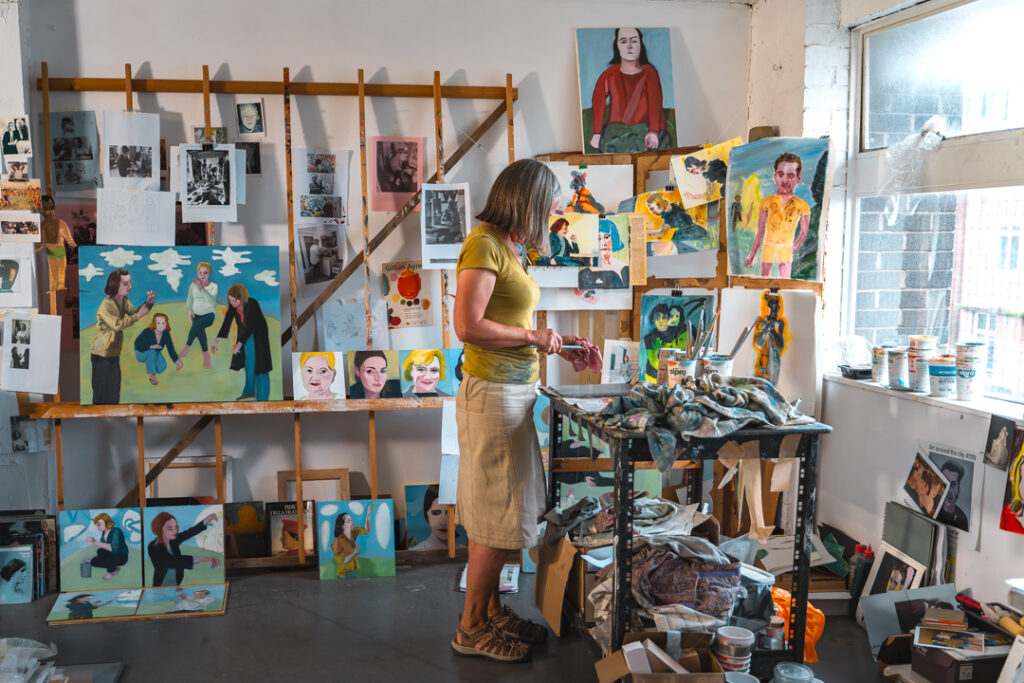Bill Viola, ARTISTS ROOMS
27 January 2024 – 2 June 2024

American artist Bill Viola (born 1951) is recognised internationally as a pioneer of video art, and today remains one of its leading practitioners. His work explores universal human experiences – birth, death and the unfolding of consciousness – and is shown in museums and galleries worldwide.
This exhibition presents three intimate and moving works from his well-known series the Passions.
ARTIST ROOMS is a national programme and collection managed by Tate and National Galleries of Scotland with the support of Art Fund, Henry Moore Foundation and using public funding by the National Lottery through Arts Council England and Creative Scotland.
Learn more about Bill Viola: The official BILL VIOLA website
Find out more about the making of the Passions: Bill Viola at Work: Making The Passions Videos – YouTube
Ashanti Hare, River that never rests
19 March 2024 – 22 September 2024

Ashanti Hare is a Devon-based multidisciplinary artist who explores their spiritual being through performances informed by traditional folk practices. Hare’s research into the minkisi or power bundles from the Congo in RAMM’s World Culture collections inspired their new commission for RAMM.
Their filmed performance explores the River Exe as sentient. Hare describes it ‘as the watcher who connects the physical with documented histories of Exeter and the wider south west; other worlds; the many oral histories of global majority people and wildlife that travel to and through it’.
Hare’s research into both the African origins of Vodou and Vodon practices and water gods in a range of African and Norse mythologies reveal water as a bridge between worlds. In these narratives, water represents the cyclical nature of grief; death and rebirth; joy and celebration. For Hare, water also becomes a ‘symbol for the transatlantic slave trade’.
The cased display in RAMM’s courtyard shows their filmed performance and the objects used in their performance alongside nkisi from the museum’s collection.
Janet Sainsbury, Points in a Constellation
21 November 2023 – 19 May 2024

The museum’s collections and displays provide inspiration for artists locally and nationally to create new work. RAMM commissioned Exeter-based artist Janet Sainsbury in Spring 2023. She is known for her contemporary approach to portrait painting.
Sainsbury chose to study four women artists whose work is in RAMM’s art collection: two Exeter-based contemporary artists, Michelle Sank and Amy Shelton, and two artists with links to the southwest, Barbara Hepworth (1903-1975) and Gillian Ayres (1930-2018). Sainsbury met, photographed and sketched both Sank and Shelton from life while she referred to historic photographs of Ayres and Hepworth to inform her sketches and create new portraits.
To celebrate International Women’s Day, Janet Sainsbury will be at RAMM on Saturday 9 March from 11 am to 3 pm with a temporary display of additional work made for this commission. The artist will be in conversation with Lara Goodband, Contemporary Art Curator & Programmer, at 11:30 am that day. Free, drop-in.
Find out more about Points in a Constellation: Janet Sainsbury: Points in a Constellation – RAMM (rammuseum.org.uk)
Michelle Williams Gamaker, The Silver Wave
Until 13 October 2024
RAMM commissioned critically-acclaimed artist Michelle Williams Gamaker to produce new work to celebrate RAMM’s ‘Untold Stories’ theme. The Silver Wave film took inspiration from objects in the World Cultures collection, particularly the Arctic region.
The film tells the story of Ada Blackjack, an Iñupiat woman from Alaska who became the sole survivor of a doomed British expedition to Russia’s Wrangel Island in the Arctic in 1921. Extracts from Ada’s diary provide the dialogue to the film, read by Iñupiat poet and writer Carrie Ayagaduk Ojanen, from the Ugiuvamiut tribe.
An education pack about The Silver Wave is available for teachers.

